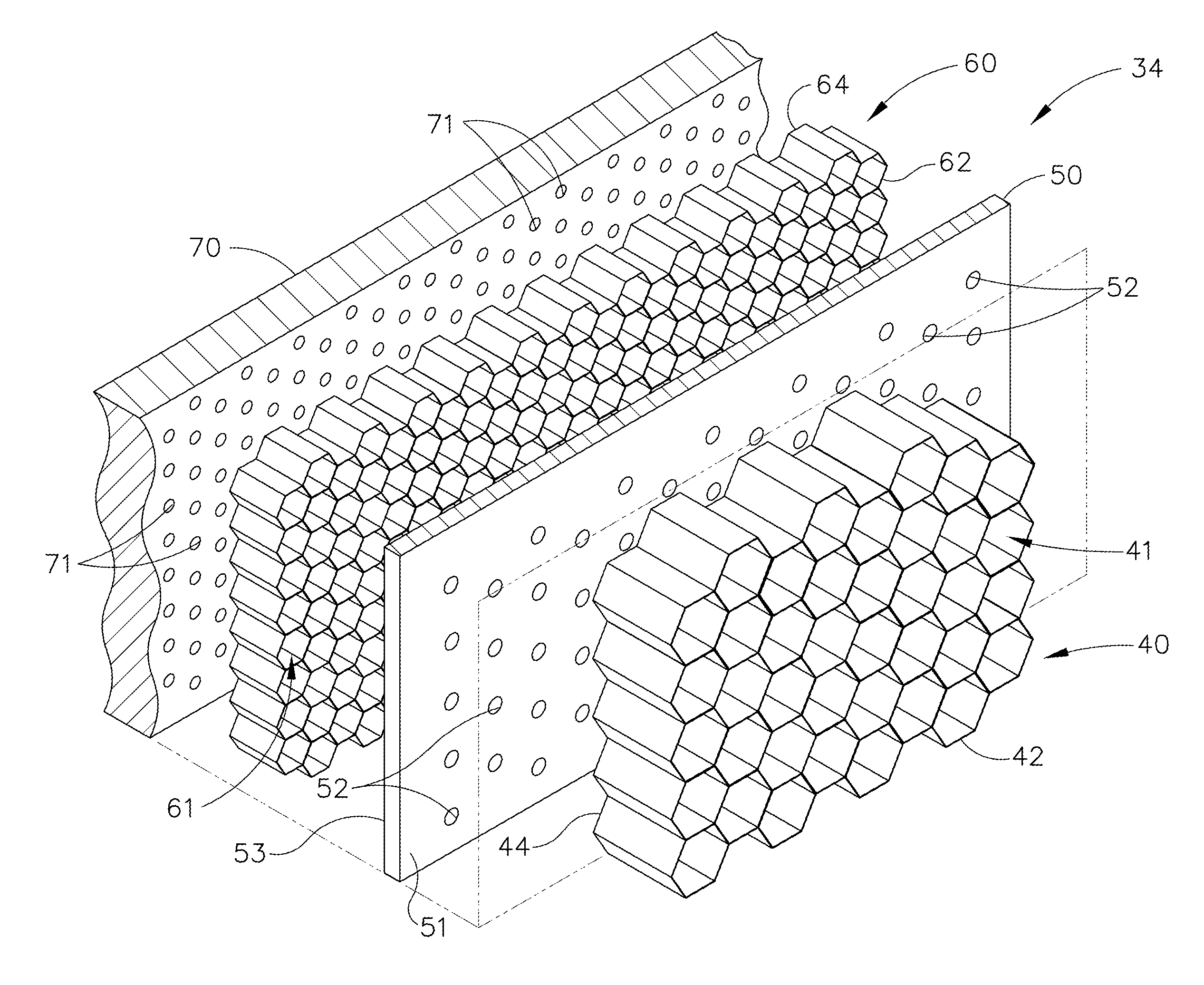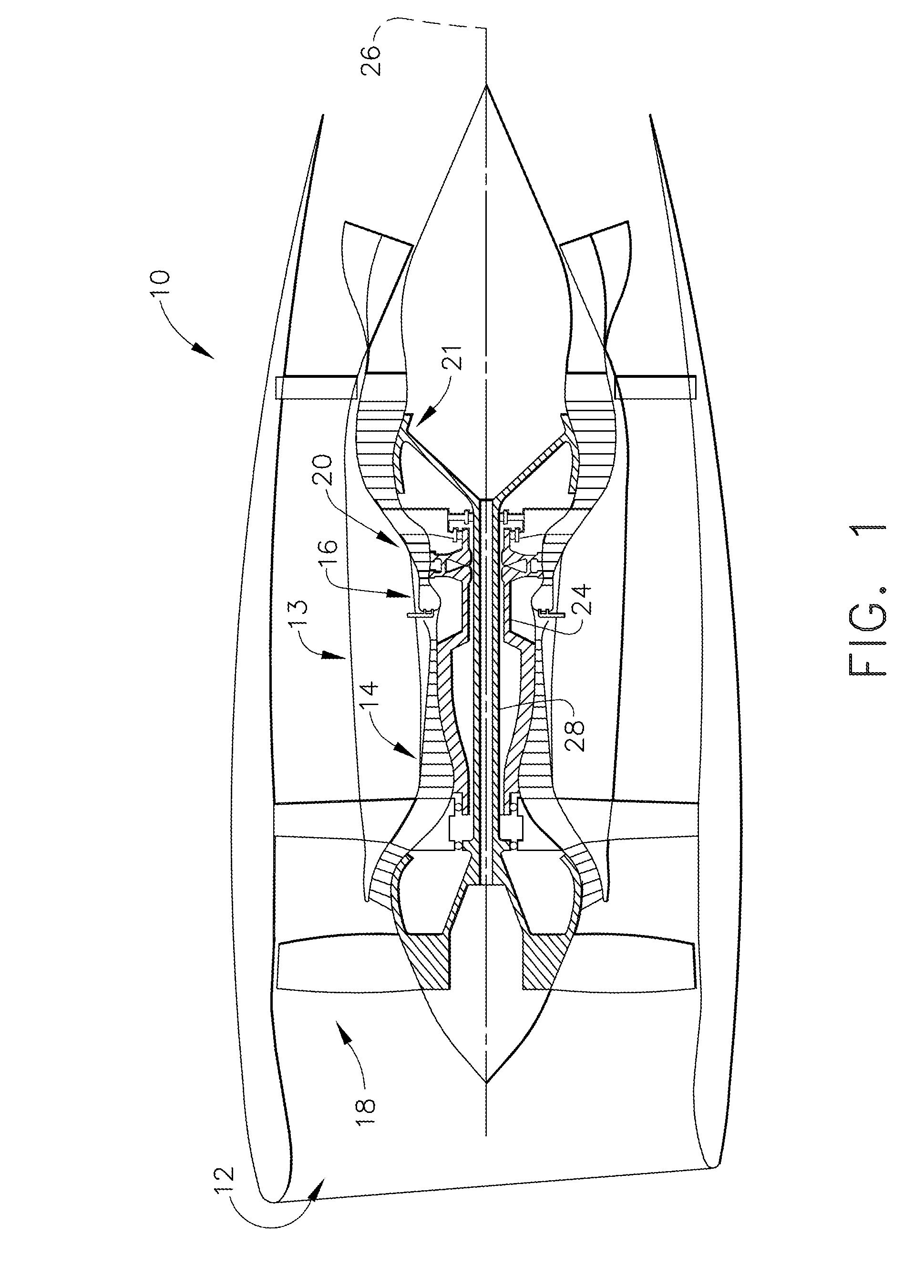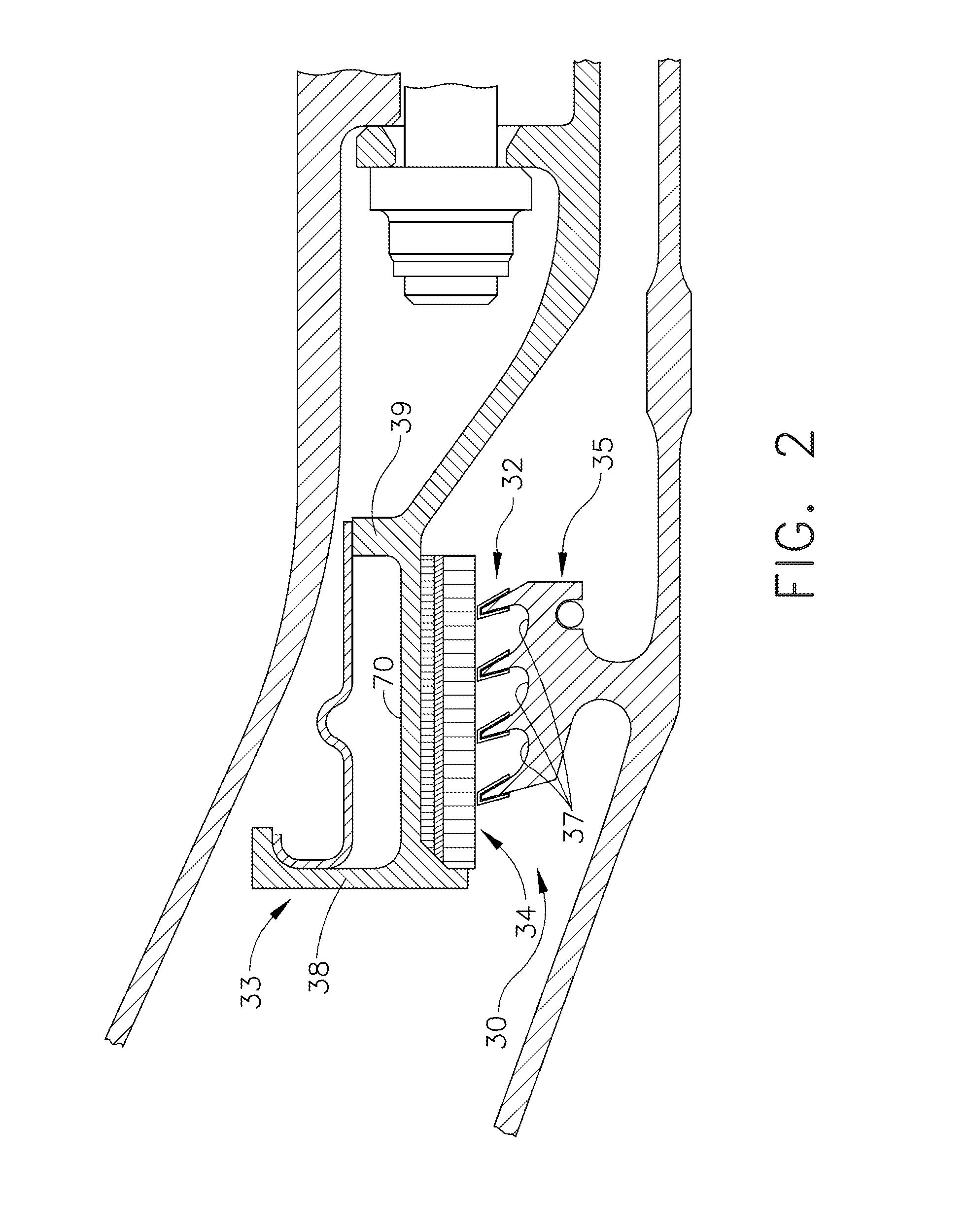Gas turbine laminate seal assembly comprising first and second honeycomb layer and a perforated intermediate seal plate in-between
a technology of laminate seals and honeycombs, which is applied in the manufacture of engines, climate sustainability, sustainable transportation, etc., can solve the problems of exhaust gas temperature overshoot, open between sealing features, and reduce the functionality of seals, so as to reduce gaps and minimize the growth of stators and rotors.
- Summary
- Abstract
- Description
- Claims
- Application Information
AI Technical Summary
Benefits of technology
Problems solved by technology
Method used
Image
Examples
first embodiment
[0035]Referring now to FIG. 3, an exploded assembly of the laminate seal assembly 34 is depicted. The laminate seal assembly 34 is formed of a laminate of materials and comprises a radially inward first honeycomb layer 40 which is closest to the seal teeth 32 (FIG. 2) during operation of the engine. The first honeycomb layer 40 includes a plurality of honeycomb cells 41 defined by thin walls. The first honeycomb layer 40 is made of a plurality of honeycomb cells 41 which are generally hollow and extend between a first edge 42 and a second edge 44. Although the term “honeycomb” is utilized herein, the term should not be considered to be limiting of the geometric shape of the honeycomb cells 41. While six-sided cells are shown, the various shapes may be utilized including circular, square, rectangular or other geometric shapes. The honeycomb cells 41 each have a height extending from a first edge 42 to a second edge 44 of the first honeycomb layer 40. The first honeycomb layer 40 mate...
second embodiment
[0041]Referring now to FIG. 5, an exploded assembly view of the double layer laminate seal assembly 134 is depicted. The thermal laminate structure includes a first radially inward honeycomb layer 140 which may be of similar description to the first honeycomb layer 40 previously described. For example, the first honeycomb layer 140 includes an inner edge 142 and an outer edge 144. Positioned on the radially outer edge 144 of the first honeycomb layer 140 is an intermediate seal plate 150 which may be a low conductivity material positioned between the first honeycomb layer 140 and a low conductivity structure 160. The intermediate seal plate 150 may or may not be bonded to the low conductivity structure 160. The intermediate seal plate 150 may include a plurality of apertures or may be solid as depicted. In the instance that perforations are utilized, they may vary in size, shape, number and arrangement as previously described.
[0042]Above or radially outward from the intermediate sea...
PUM
 Login to View More
Login to View More Abstract
Description
Claims
Application Information
 Login to View More
Login to View More - R&D
- Intellectual Property
- Life Sciences
- Materials
- Tech Scout
- Unparalleled Data Quality
- Higher Quality Content
- 60% Fewer Hallucinations
Browse by: Latest US Patents, China's latest patents, Technical Efficacy Thesaurus, Application Domain, Technology Topic, Popular Technical Reports.
© 2025 PatSnap. All rights reserved.Legal|Privacy policy|Modern Slavery Act Transparency Statement|Sitemap|About US| Contact US: help@patsnap.com



